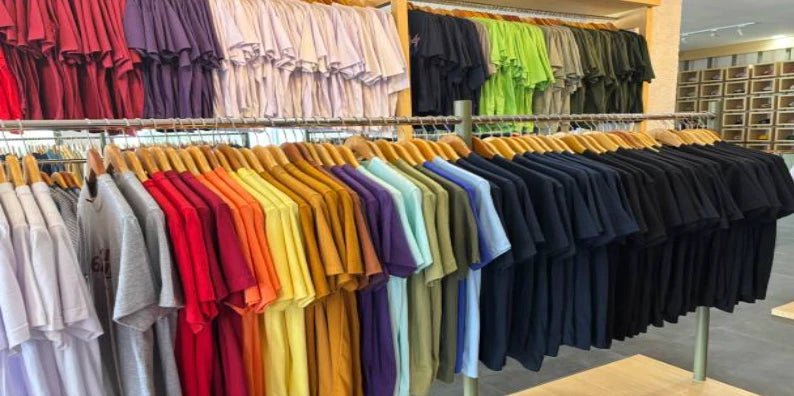
Fast Fashion's Environmental Impact - How to Choose Sustainable Alternatives
Share
Fast fashion has revolutionized the clothing industry, offering trendy designs at affordable prices. However, this convenience comes at a significant cost to the environment. In this article, we’ll explore the environmental impact of fast fashion and provide tips on choosing sustainable alternatives that align with a more eco-conscious lifestyle.
The Environmental Toll of Fast Fashion
-
Waste Production
Fast fashion encourages a culture of overconsumption. Garments are often produced cheaply, leading to rapid wear and tear, with many items ending up in landfills after only a few uses. According to the Ellen MacArthur Foundation, over 92 million tons of textile waste is generated each year, largely due to the rise of fast fashion source -
Water Usage
The fashion industry is a notorious water consumer. For example, producing a single pair of jeans can use up to 2,000 gallons of water. This unsustainable water use depletes precious resources and affects regions already suffering from water scarcity source.
-
Chemical Pollution
Many fast fashion items are made using synthetic materials and harsh chemicals, which release toxins into waterways during the production process. This leads to water pollution, which can harm ecosystems and communities. The Environmental Protection Agency highlights the dangers of these chemicals, especially in developing countries source. -
Carbon Emissions
Textile production contributes to around 10% of global carbon emissions, according to the United Nations, with fast fashion brands frequently relying on air travel and shipping for global distribution. This significantly increases the carbon footprint of each garment source. -
Microplastics
Synthetic fibers such as polyester and nylon, commonly used in fast fashion, shed microplastics during washing. These tiny particles flow into waterways, eventually making their way into oceans, where they threaten marine life. A study by the International Union for Conservation of Nature found that microplastics from textiles account for 35% of the global microplastic pollution source.
Choosing Sustainable Fashion Alternatives
The good news is that consumers can make better choices by adopting sustainable fashion practices. Here are some tips to help you shop more responsibly:
-
Buy Less, Choose Wisely
The first step to sustainable fashion is reducing the frequency of your clothing purchases. Opt for timeless, high-quality pieces that will last longer and can be worn across seasons. Brands that emphasize durability, such as Patagonia or Eileen Fisher, are good places to start. -
Choose Natural Fibers
Organic cotton, hemp, and linen are sustainable alternatives to synthetic materials. These fibers are biodegradable and require less water and chemicals to produce. Look for certifications such as GOTS (Global Organic Textile Standard) when buying clothing. -
Shop Secondhand
Thrift stores, online resale platforms like ThredUp, and vintage shops are great options for sustainable shopping. By giving clothes a second life, you help reduce textile waste and the demand for new production. -
Support Ethical Brands
Seek out fashion brands committed to ethical labor practices and environmental responsibility. Websites like Good on You rank brands based on their environmental and social impact, making it easier for consumers to make informed decisions. -
Repair and Recycle
Instead of discarding worn clothes, consider repairing them or upcycling them into something new. Brands like Levi's now offer programs that allow customers to return old jeans for recycling or repurposing, reducing the overall waste in landfills.
Fast fashion's environmental impact is undeniable, but by making conscious choices, we can reduce our footprint and support a more sustainable future. By opting for quality over quantity, choosing eco-friendly fabrics, and supporting ethical brands, we contribute to a circular economy that values the planet and its resources.
For more tips on sustainable living, explore our eco-friendly product alternatives section at NovoBam!

